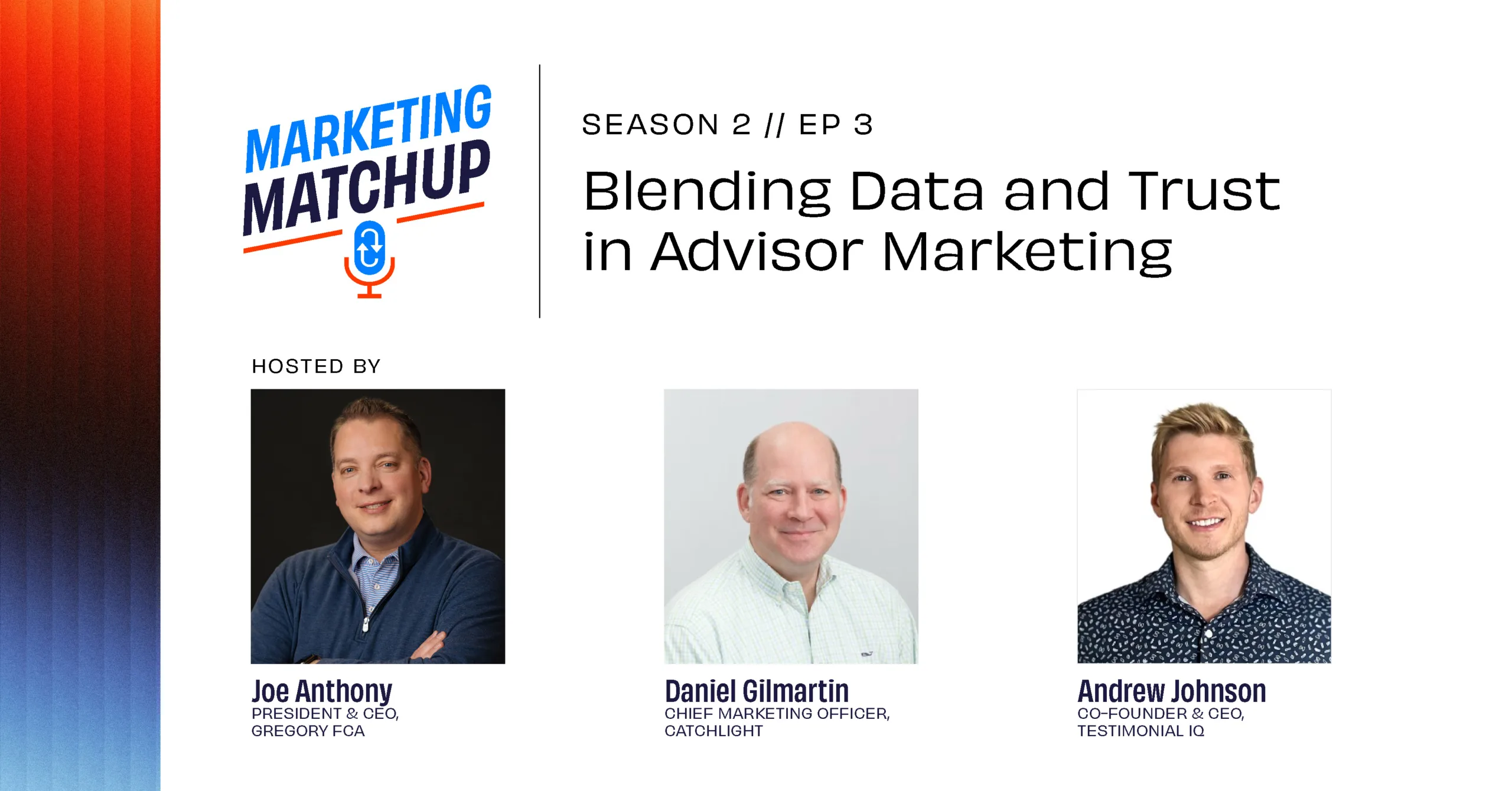Advisors spend plenty on lead generation. Many still lose those leads before they ever get a meeting. But research is a two-way street. While RIAs evaluate their leads for the most likely prospects for conversion, those people are sizing up the advisors in turn.
In our latest episode of Marketing Matchup, Andrew Johnson, founder of Testimonial iQ, and Dan Gilmartin, CMO of Catchlight, explain what really drives organic growth for financial advisors.
Momentum matters more than perfection
Firms approach growth in wildly different ways. Some rely on local ads. Others double down on referrals or niche networks. Johnson said the difference between those that grow and those that do not is consistency.
“The firms that grow well don’t get stuck in analysis paralysis,” he said. “They plant some seeds, see what works, and double down.”
Gilmartin added that more marketing leaders are borrowing playbooks from the software world. They track lifetime value to acquisition cost and time to payback. “They’re comparing every channel side by side,” he said. “The discipline around measurement is getting stronger.”
Advisors are spending more time connecting tools instead of only buying them. Both guests agreed that three factors matter most: speed, personalization, and social proof.
Speed to lead: “Some firms can tell you down to the minute,” said Gilmartin. “If we call within 60 seconds versus five minutes, we know the difference in conversion rate.”
Personalization: Advisors win when they tailor outreach to each prospect’s interests or life stage.
Social proof: Reviews and testimonials influence both Google results and AI-driven search. “Structured review content on your site is gold,” said Johnson.
Nurturing a growth engine
Many advisors still hesitate to ask for testimonials, worried about negative comments or market performance. Johnson analyzed thousands of Google reviews from advisors across the country, and found something different.
“Clients almost never write about returns or fees,” he said. “They write about responsiveness, communication, and trust. One theme we saw again and again was that clients say their advisor feels like family.”
The message is clear. Social proof comes from relationships and reliability. The prospects who will drive growth at an RIA are, in their own words, not focused on beating a benchmark to the exclusion of anything else.
Johnson and Gilmartin, though approaching client acquisition from different points, agreed that nurturing leads takes time. Advisors who push too hard with rapid email sequences or closing messages risk alienating prospects.
“At any given time, only a small percentage of your total market is ready to buy,” Johnson said. “Your job is to stay top of mind so that when they are ready, they remember you.”
Gilmartin calls it “the purchase pretzel.” The path to conversion is rarely straight. People experience major life events such as selling a business or retiring on their own timeline. Firms that stay visible and helpful during that period are the ones that get the call when it matters.
Both pointed to integration as the next step.
“Firms that stitch their technology together—AI, CRM, testimonials, data insights—are going to pull ahead,” said Gilmartin. “It’s about creating a cohesive experience for both the advisor and the client.”
Johnson added that leadership matters as much as technology. “No one wakes up in the morning wanting to buy software,” he said. “You need someone inside the firm who’s passionate enough about solving a problem to take on the extra work that comes with it.”
For firms still struggling to turn marketing into measurable growth, that commitment to leadership may be the deciding factor.
Where advisor marketing goes next
- Organic growth depends on connecting data with credibility.
- Consistency and follow-through outperform any single tactic.
- Reviews and testimonials drive discovery across Google and AI search.
- Patience and process are essential when nurturing prospects.
- Firms that connect their marketing tools and empower strong leaders will grow faster than those that do not.
Watch the full conversation below, and subscribe to Marketing Matchup on the podcast platform of your choice.


